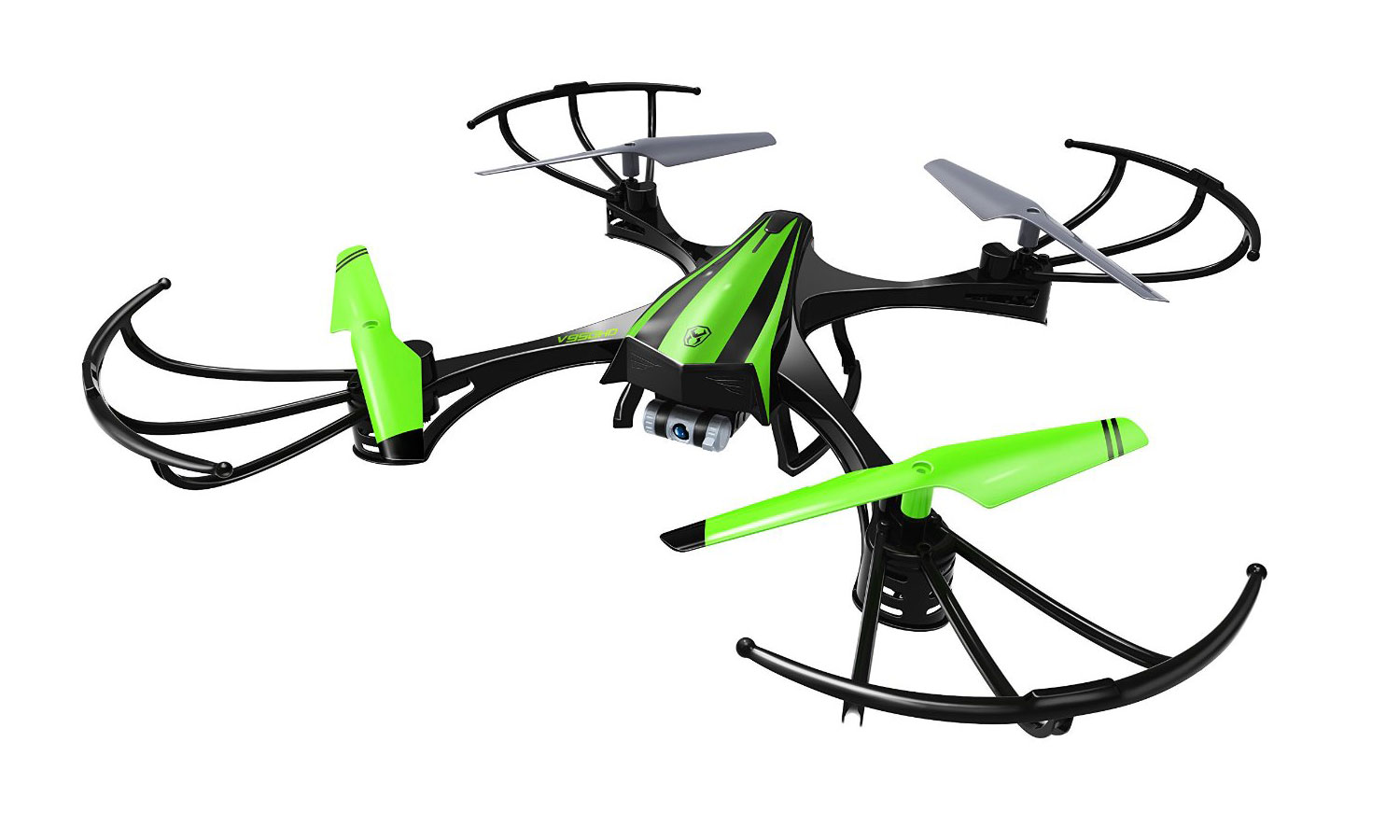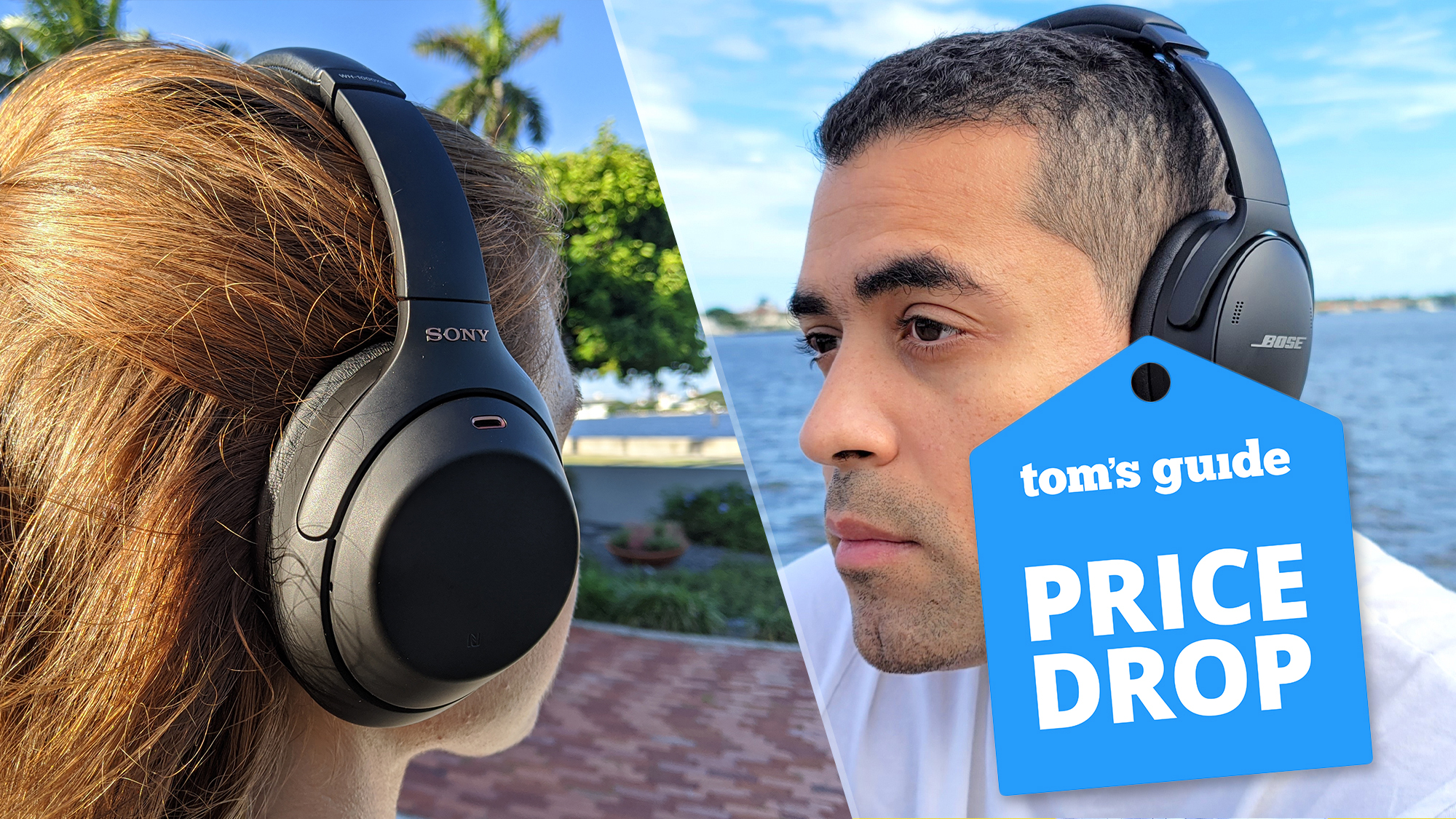Tom's Guide Verdict
The Sky Viper v950 is a cheap, simple-to-fly drone that takes decent video — as long as you don't expect documentary-quality video or quick responses.
Pros
- +
Simple to fly
- +
Decent quality video
- +
Inexpensive
Cons
- -
Slower than other small drones
- -
Annoying beeping while recording video
- -
Panorama mode requires manual shooting
Why you can trust Tom's Guide
A high-end video drone like the DJI Phantom 4 can cost you more than $1,000. Fortunately, there are cheaper options out there for budding filmmakers, such as the Sky Viper v950. This sub-$100 drone comes in two versions: the v950HD, which captures HD video, and the v950STR, which streams 640 x 480 video to your phone over Wi-Fi. Though both models are a little slow and sluggish in flight, they are simple to fly. We took a look at both versions.
Design
The v950 is a light, flexible drone that feels rather flimsy, but if you crash a lot, that could be a good thing. The plastic-like body is constructed from Duraflex (a combination of fiberglass, plastic and flexible resin) that bends very easily. Using only light pressure, I bent the arms where the motors are mounted. And although they're malleable enough to twist and flex in flight — which can make the drone hard to control — it also means the arms didn't break despite numerous crashes.
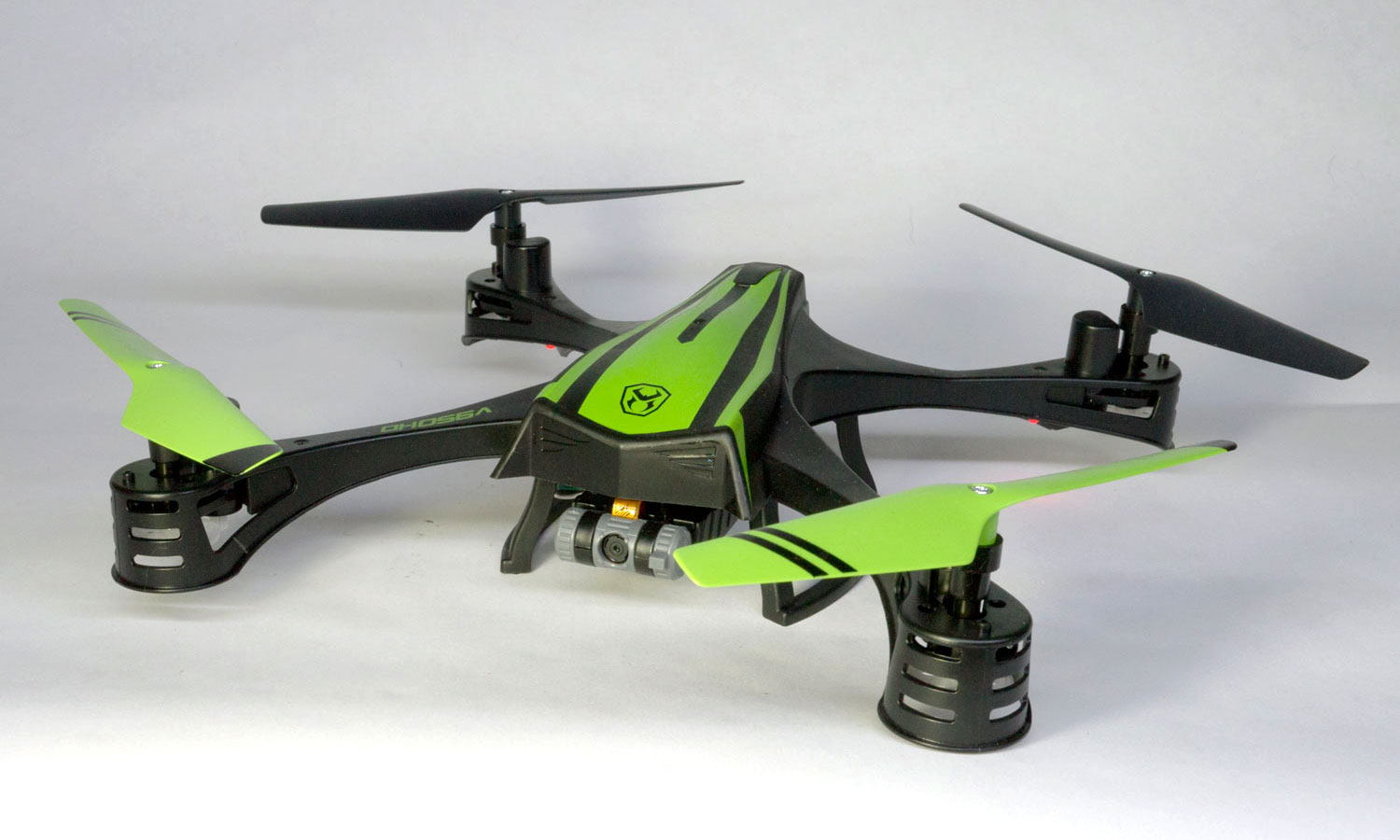
On the end of the drone's arms are the four large rotors, each measuring 5.25 inches across. Rather small motors drive the rotors. Most drones connect the rotors directly to the motor, so each turn of the motor translates into one turn of the rotor blades. The v950, however, uses two gears: one on the motor and a larger one on the rotor drive shaft. This means that the motor has to rotate several times to turn the blades once. Although the motors are fast enough to handle this, it makes this drone a bit slower and less responsive than others.
Next to these motors, on each arm, is an LED — green for the front arms and red for the back. A set of included rotor protectors snap into the motor housing and protect the rotor blades in crashes. These do a good job of shielding the rotor blades, and it's recommended that you use them.
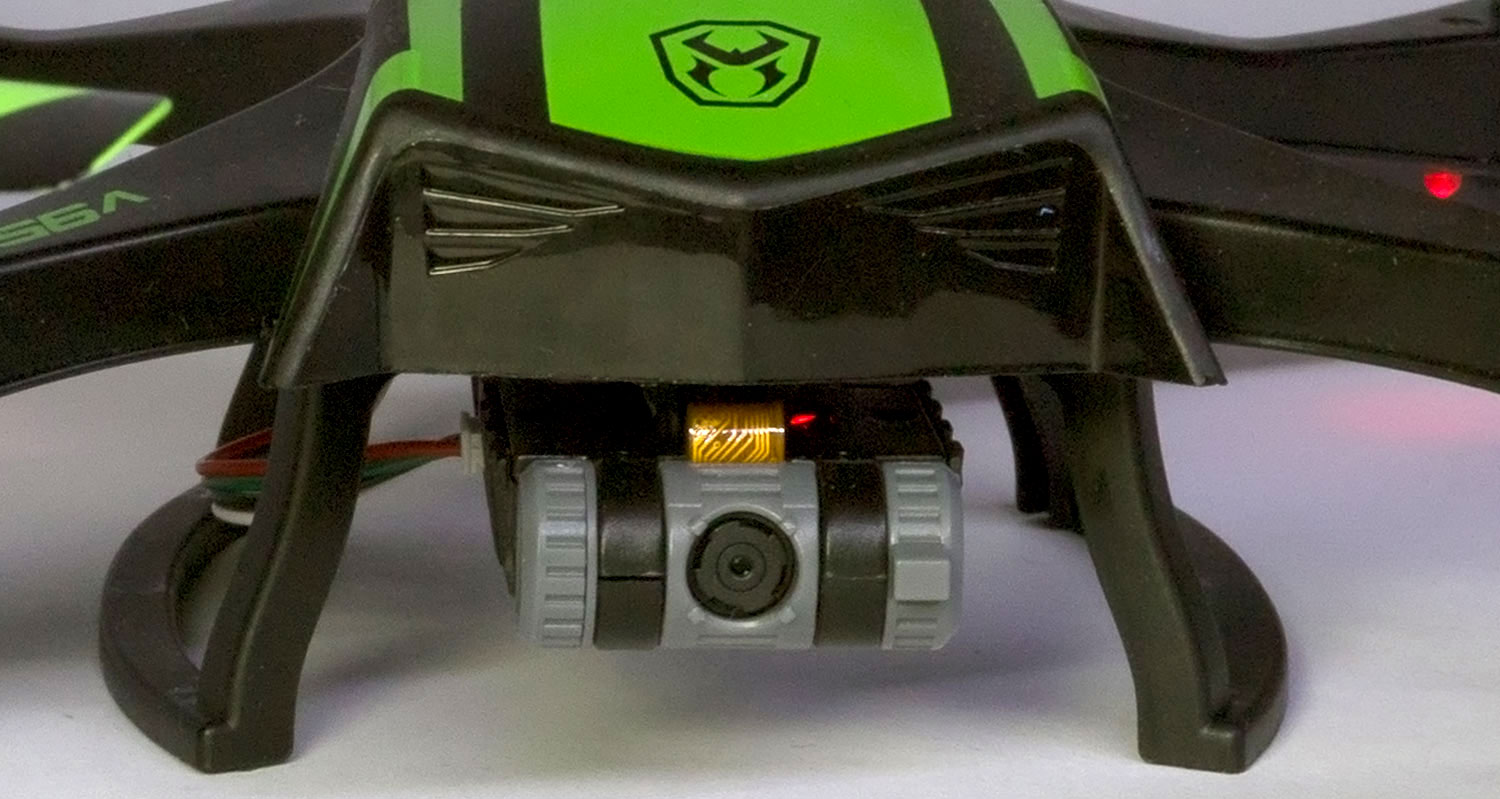
Below the central body of the case, you'll find a gum-packet-size camera. Its lens is housed in a rotating cylinder that tilts from pointing straight ahead to straight down. You adjust the lens's tilt manually; there's no way to change it in flight.
This 720p camera is connected to the main body by a loose cable and is secured by a simple latch, which means you can easily remove the camera if you want to fly without it. You can't use the camera elsewhere, though, as the drone's battery powers it. On the v950HD version, a microSD card (up to 32GB) plugs into the back of the camera to store the HD video. The v950STR version does not include this; all of the video is streamed to, and recorded on, your phone through the Sky Viper Video Viewer app, which is available for iOS and Android devices.
The drone runs on a small, 650-mAh, lithium-ion polymer battery that fits into the back of the case. This is a standard size and type, but it is not easy to swap, as the battery is secured behind part of the case that's held in place by a screw that has to be removed. Skyrocket says this design is intended to stop younger users from accessing the battery (which, like all drone batteries, can catch fire if punctured), but it also means that swapping batteries isn't a realistic option on this drone.
MORE: The Best Drones and Quadcopters on Any Budget
Controller
The v950's controller is a small device, similar to an Xbox controller. It includes two control sticks surrounded by trim buttons, a single power button and a slider for the sensitivity of the controller. A single shoulder button puts the drone into stunt mode. Four AAA batteries fit into a cavity under a panel on the back of the controller, but batteries aren't included.
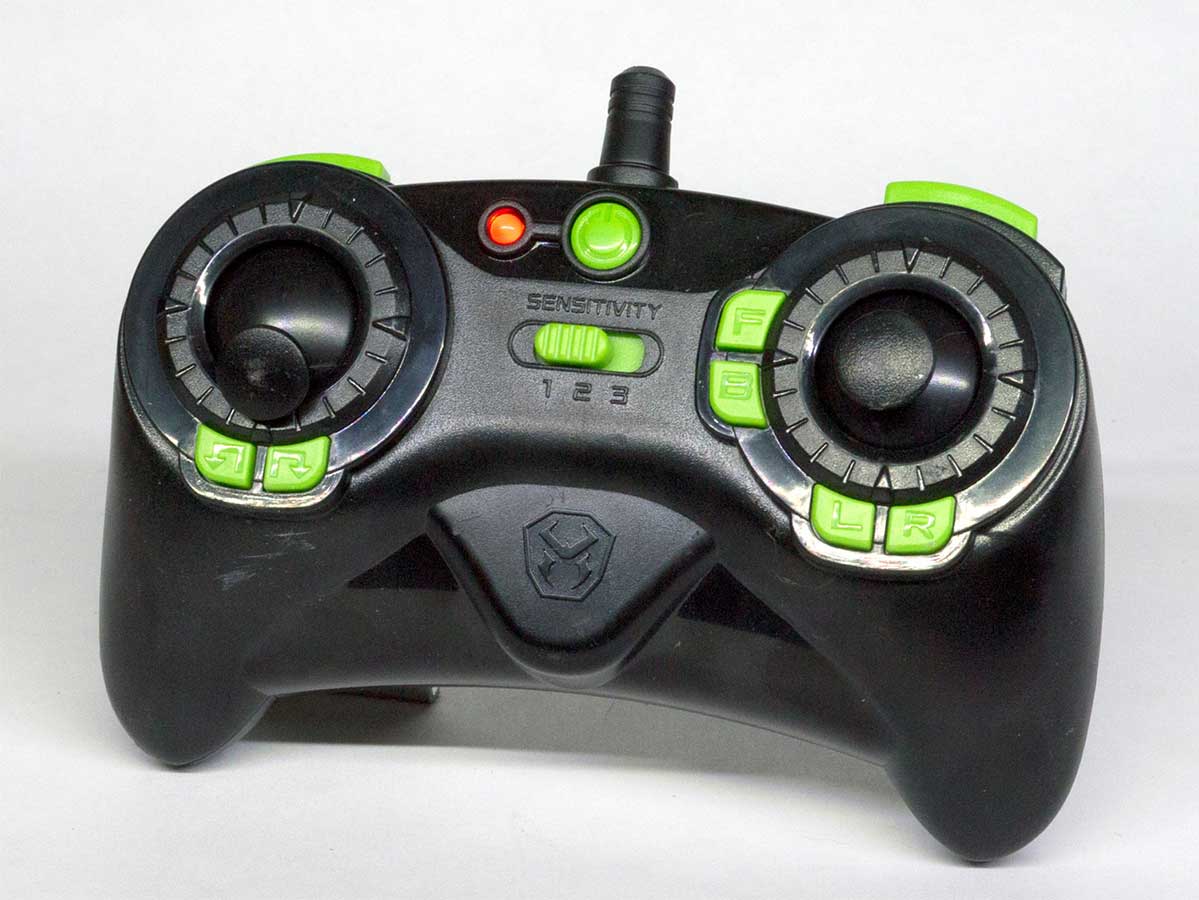
The controller fit well into my hand, with my thumbs falling naturally onto the control sticks and my index finger onto the shoulder buttons. The controller communicates with the drone over a 2.4-GHz Wi-Fi connection. We didn't have any issues with interference, and the controller worked at up to a distance of 40 to 50 feet without problems.
The v950STR version includes a phone holder that latches on to the top of the controller, with a spring mechanism holding the phone firmly in place. The holder isn't big enough to hold larger devices such as a tablet; only devices smaller than 3 inches wide can fit. The iPhone 6 Plus should barely squeeze in there, but nothing bigger.
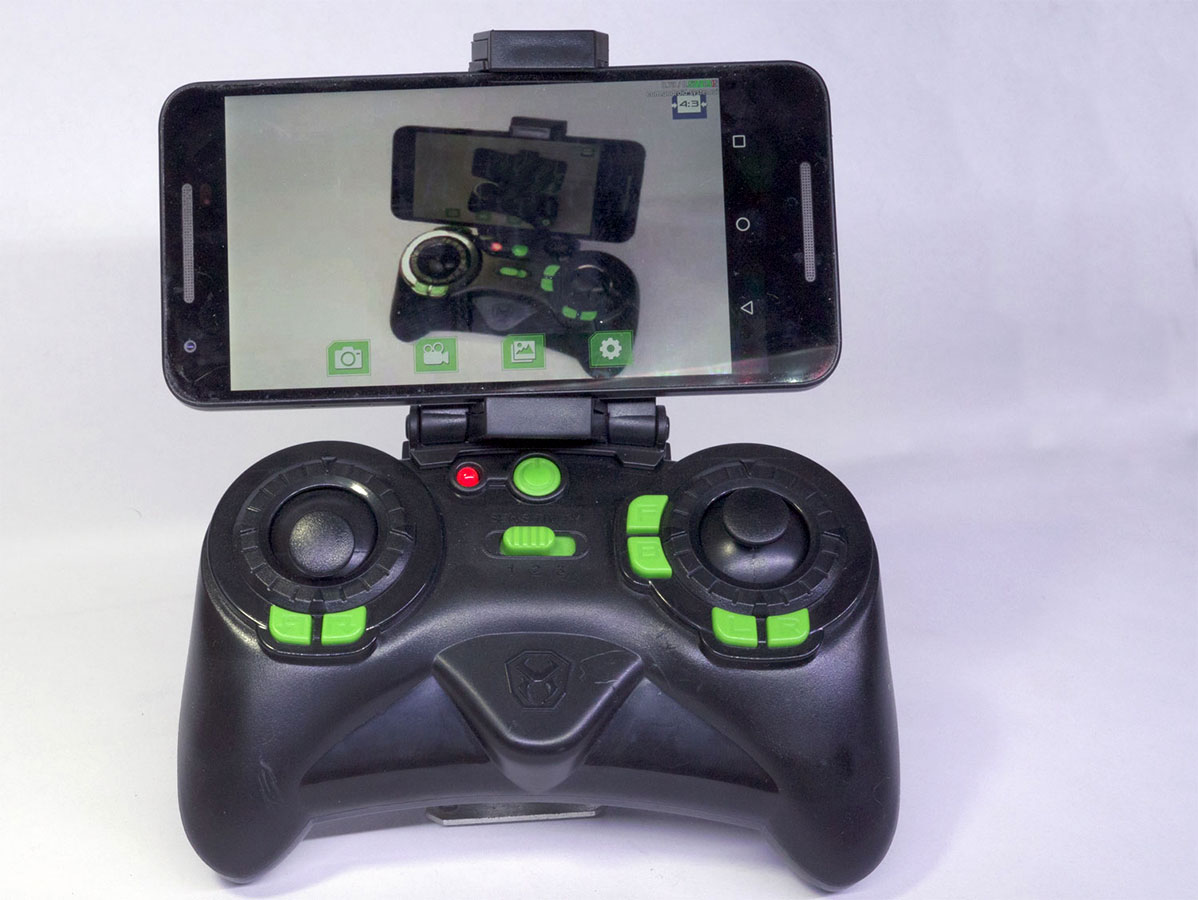
The weight of the phone also makes the controller feel rather unbalanced. When I attached a Google Nexus 5X, the controller had a tendency to tip forward, meaning I had to keep a tighter grip on it, which became uncomfortable after a couple of minutes. Most larger controllers that use phones or tablets include the option to hang them around your neck for more comfortable use, but the v950 doesn't offer this option.
Video drones are more about stability than speed, and the v950 does a decent job of providing a steady platform for the camera.
Instead of a phone holder, the v950HD version offers two large right shoulder buttons for taking photos and starting/stopping video. You don't get any preview of the video that the drone is going to capture, so you have to visualize and hope that you captured what you wanted. The photo button beeps loudly when pressed, with the beeps occurring continuously (and rather annoyingly) while the video is being recorded to the microSD card.
Flying
Video drones are more about stability than speed, and the v950 does a decent job of providing a steady platform for the camera. But as is the case with many drones, the v950's stability comes at the price of speed and maneuverability. Compared to such racing drones as the Hubsan X4, the v950 is a sluggish, pedestrian flier. It can move at speed (we measured it at about 17 mph), but it becomes somewhat hard to maneuver when it's moving at that pace. It is easier to handle when moving more slowly, although it still remains less responsive than smaller, zippier drones.
There are three flight mode settings: beginner, intermediate and expert. These don't affect the overall speed of the drone but rather the sensitivity of the controls. The expert mode makes the control sticks more sensitive, making it easier to make slight adjustments to the flight but also easier to crash.
MORE: What the FAA's Drone Rules Could Mean for You
The v950 offers some basic stunt features. Press the button on the left shoulder and move the right stick, and the quadcopter does a somersault. These only work if the camera is disconnected, though. There are no autonomous flying modes.
Photos & Video
The main difference between the two versions of the v950 involves the camera. The v950 HD shoots in — you guessed it — HD. The v950STR doesn't have any onboard storage capacity, so it streams the feed to your phone.
The v950HD's camera captures good — but not outstanding — quality film. Shooting at 720p resolution (1280 x 736 pixels at 30 frames per second), it captures details fairly well, but the colors are rather flat and unappealing. The video is also grainy; areas of flat color (like a nice blue sky) have a rather distracting, dirty feel resulting from the noise and heavy compression the camera uses.
There is also a strong wobbly, jelly-like look to the video when you're maneuvering the v950HD, caused by the vibrations of the motors. This video is stored as Motion JPEG files on a microSD card in the rear of the camera. A 4GB microSD card is included; it can hold more than an hour of video. Cards up to 32GB are supported. Photos are shot at the same resolution (equivalent to about 1 megapixel) and look the same, as they are just still frames captured from the camera.
The v950STR camera doesn't have any onboard storage capacity. Instead, it streams the video to your phone over Wi-Fi through the Sky Viper Viewer app (available for iOS and Android). The video is captured at a 640 x 480-pixel resolution, which is significantly lower than the HD resolution of the v950HD.
So, the choice between the two models comes down to which you want more: the live, low-res video preview of the v950STRM; or the higher-quality HD video of the v950HD, without a preview.
The v950HD's camera captures good — but not outstanding — quality film.
Both versions of the drone offer a feature called "panoramic view rotation." When you press and hold the stunt button and move the direction stick, the drone will hover in place and rotate slowly, taking about 7 seconds to do a full circle. The idea is that you can take photos or video to capture a panorama. It's a nice idea, but only half-formed. While the videos it takes are quite attractive, you have to manually take each photo yourself and then combine them in panorama software (not included) to form a true panorama.
MORE: Drone Buying Guide: Everything You Need to Know
Repairability & Parts
A spare set of rotor blades comes with the v950, and additional sets of four will cost you just 50 cents (plus a $2 shipping-and-handling fee). These rotor blades are held in place by a single screw, so you need the included screwdriver to remove or replace them.
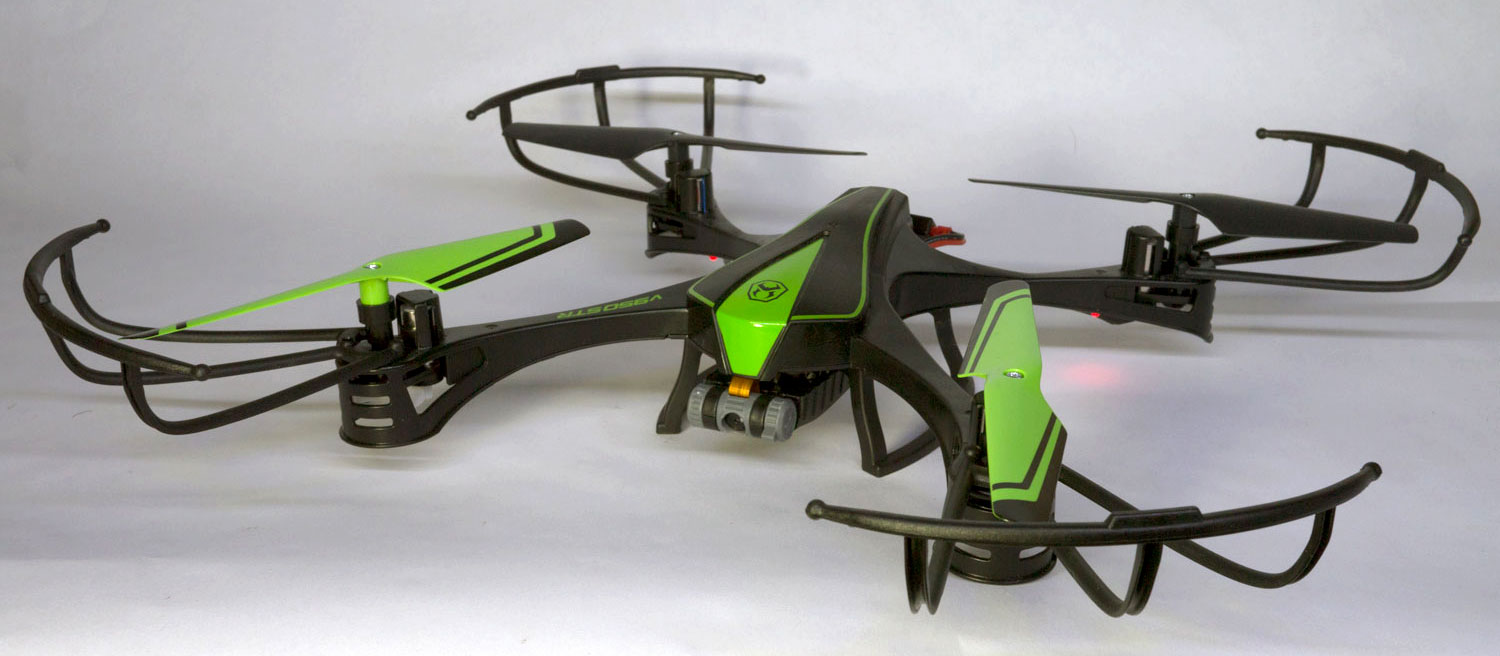
The small, 650-mAh, lithium-ion polymer battery is not easy to swap out, though, as it is inside the drone case and requires a screwdriver to remove. Although you can easily find spare batteries for less than $6.
Battery Life
We found that the small battery on both v950 models didn't last long: about 5 to 6 minutes. That's pretty typical for small drones like this, though. We just wish it weren't so difficult to swap out the batteries. To remove the battery, you have to undo a screw on the base of the drone body, and then push a latch and pull it out. The 650-mAh Li-ion polymer batteries are a standard type, though, so you can buy spares for about $6. These batteries are charged via an included USB cable; charging takes about 35 to 40 minutes.
Bottom Line
Both models of the v950 offer a lot of features for the price. For less than $100, you get an easy-to-fly quadcopter with a comfortable controller, although the addition of a phone to the STR model makes it a little unbalanced. It is not as fast or maneuverable as drones such as the Blade Nano QX RTF, but it is more focused on taking video than on fancy flying. The v950 is a tough drone as well, with enough flexibility to survive most crashes, and both models take decent video.
You don't get the rock-steady images of more expensive drones. There is no image stabilization, and the video does get shaky sometimes. Still, both models provide great value for the money, so you'll need to decide whether you'd rather have HD video or the ability to live stream to a cellphone. Either way, the v950 offers a lot of drone performance for a low price.
Richard Baguley has been working as a technology writer and journalist since 1993. As well as contributing to Tom's Guide, he writes for Cnet, T3, Wired and many other publications.
